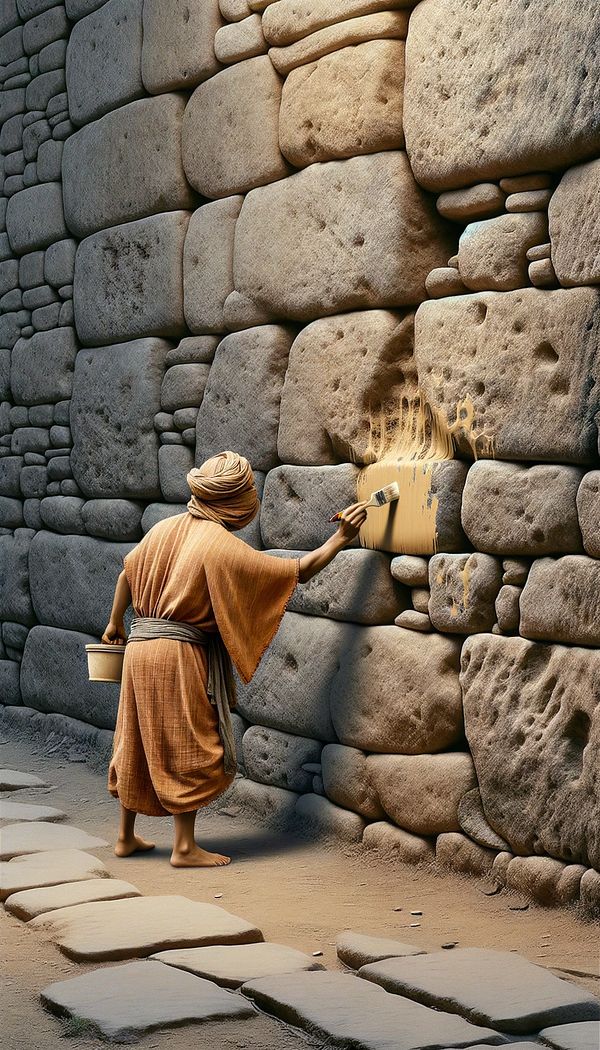What is Distemper?
Distemper is a water-based paint used on walls and ceilings.
Description
Distemper is a traditional paint that has been used for centuries to decorate walls and ceilings. Unlike modern paints, distemper is water-based and composed of natural ingredients such as chalk, lime, and pigment, which gives it a unique texture and matte finish. This time-honored medium dries to a powdery finish and has the benefit of being breathable, making it ideal for use in older buildings where moisture needs to escape and where the charm of historical authenticity is sought after.
Because it is water-soluble, distemper is not as durable as other types of paints and may require more frequent touch-ups. However, its natural composition makes it an eco-friendly option for those looking to minimize their environmental impact. The paint's unique characteristics also mean that it adds a depth and warmth to interiors that is difficult to replicate with more modern finishes. Reapplication and maintenance can add to the lived-in feel, contributing to a space's character and charm.
Despite these benefits, the use of distemper has declined in favor of more durable and less maintenance-intensive options. It remains, however, a popular choice for restoring or recreating period properties, and for use in specific areas such as museums, historic homes, and churches, where maintaining historical accuracy is paramount.
Usage
Distemper is often chosen for projects involving the restoration of historic buildings, or when creating interiors that seek to capture a traditional or period aesthetic. It's particularly favored in structures that require 'breathable' wall treatments to manage moisture, such as old stone or timber-framed buildings. In contemporary design, distemper can be used to add character and a sense of history to a space.
FAQs
-
Can distemper paint be cleaned?
Due to its water-soluble nature, distemper paint is not as easily cleaned as more modern paints. Gentle dusting is recommended, but heavy scrubbing or use of water can damage the finish.
-
Is distemper paint suitable for all areas of a house?
Distemper is best suited for dry areas and ceilings. It's not recommended for kitchens, bathrooms, or high-traffic areas where durability and ease of maintenance are required.
-
Can distemper paint be used over existing paint?
Applying distemper over existing paint is not generally recommended unless the existing surface is properly prepared and is also a breathable material. Compatibility and adhesion might be issues when layering different types of paint.
Practical Application
When using distemper, it's important to prepare the surface by ensuring it's clean, dry, and free of dust or grease. Applying a primer might be necessary for some surfaces to ensure the best finish. Since distemper is not as durable as other paints, expect to perform maintenance and touch-ups more frequently, especially in areas subject to wear or moisture. Embrace the unique characteristics of distemper by using it in spaces where its historical charm and natural composition can be fully appreciated.
-
Decorative Techniques322 articles
-
Historical Periods & Movements150 articles
-
Materials & Textiles360 articles
-
Wall Treatments & Finishes157 articles
-
Sustainability & Eco-Friendly Design69 articles
-
Spinet DeskA spinet desk is a compact and versatile piece of furniture, blending the functionality of a writing desk with the aesthetic appeal of a spinet.
-
De StijlDe Stijl is an art movement that emphasizes abstraction and simplification.
-
Serpentine FrontA serpentine front refers to a curved, undulating form on the front edge of furniture.
-
Dust CoverA dust cover is a protective fabric lining attached to the underside of furniture.
-
Italian FinishingItalian Finishing refers to a high-quality, meticulous approach to surface finishing in interiors, known for its attention to detail and use of luxurious materials.
